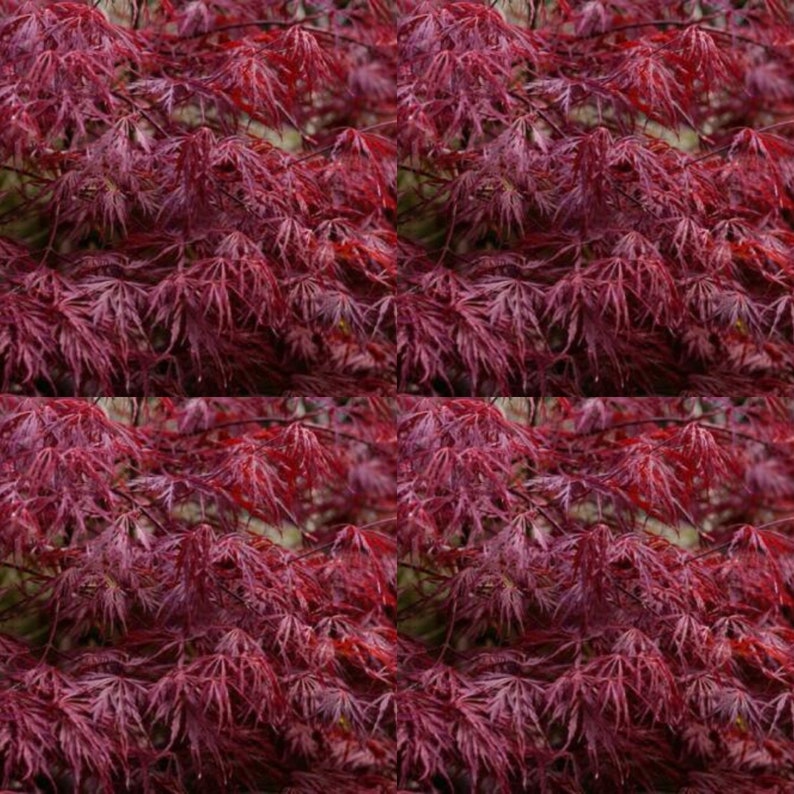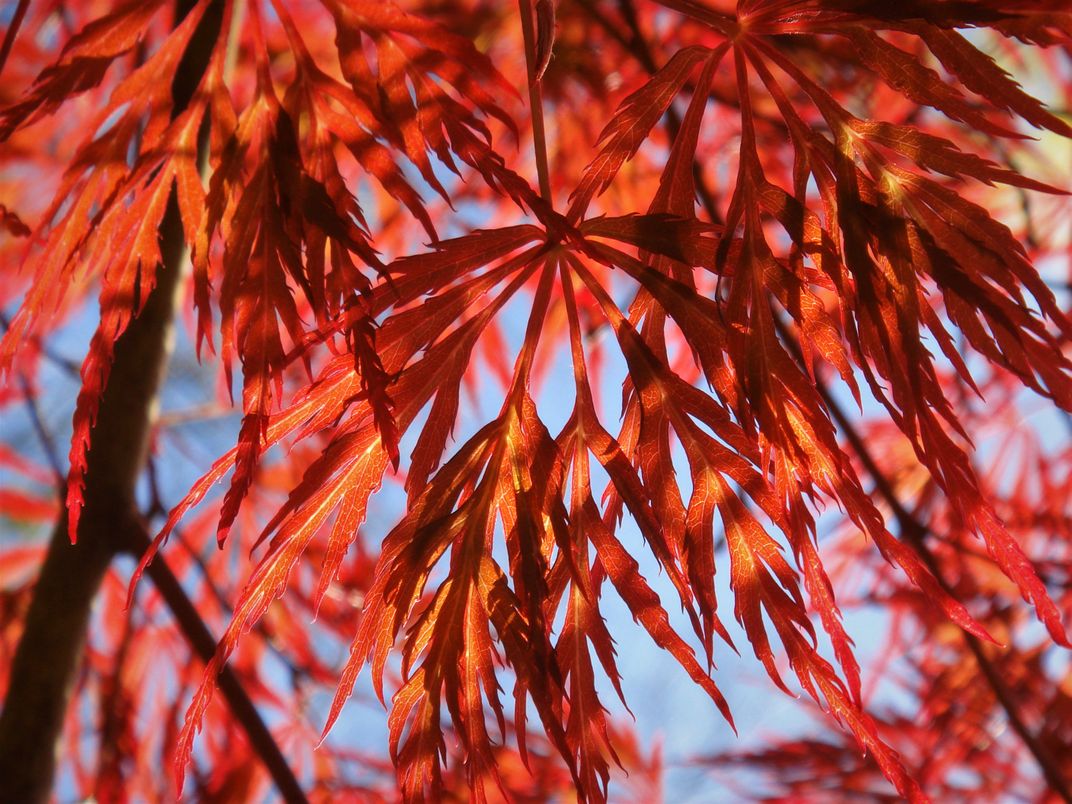

dissectum atropurpureum is the botanical name used by most authorities. It may have been planted in its current location more than a decade before the Japanese Garden was created. Washington Park Arboretum (WPA) records are unclear, but this iconic maple was received either as Acer palmatum dissectum (weeping laceleaf Japanese maple) or Acer palmatum dissectum atropurpureum (weeping red-foliaged laceleaf Japanese maple), which more accurately describes its red foliage. With its red-toned, finely-divided leaves and gracefully cascading branches, it’s the only form of Japanese maple most people are familiar with. An iconic tree within our Garden, it has a bold architectural branching structure, created by skillful pruning, and beautiful laceleaf foliage-burgundy-red in spring, bronzy-green in summer, and glowing orange-red in autumn. But I haven’t yet written about the very old and striking specimen just past the entry gate in Area B, west of the path-the Japanese maple Garden visitors are most likely to admire. Also note that when growing plants in outdoor containers and baskets, they may require more frequent waterings than they would in the yard or garden.Acer palmatum is my favorite deciduous tree, and in past blog articles I’ve written about several of the Garden’s most beautiful cultivars. Note that when grown in a container, it may not perform exactly as indicated on the tag - this is to be expected. It is even sizeable enough that it can be grown alone in a suitable container.
/cloudfront-us-east-1.images.arcpublishing.com/dmn/K6HPHXZSTBDG5FUHF6H6MEPBEY.jpeg)
Because of its height, it is often used as a 'thriller' in the 'spiller-thriller-filler' container combination plant it near the center of the pot, surrounded by smaller plants and those that spill over the edges. This is a selected variety of a species not originally from North America.Įver Red Lace-Leaf Japanese Maple is a fine choice for the yard, but it is also a good selection for planting in outdoor pots and containers. Consider applying a thick mulch around the root zone in winter to protect it in exposed locations or colder microclimates. It is somewhat tolerant of urban pollution, and will benefit from being planted in a relatively sheltered location.

It is not particular as to soil pH, but grows best in rich soils.

It prefers to grow in average to moist conditions, and shouldn't be allowed to dry out. You may want to keep it away from hot, dry locations that receive direct afternoon sun or which get reflected sunlight, such as against the south side of a white wall.
#Laceleaf red japanese maple full
This tree does best in full sun to partial shade. It grows at a slow rate, and under ideal conditions can be expected to live for 60 years or more. It has a low canopy with a typical clearance of 1 foot from the ground, and is suitable for planting under power lines. It has no significant negative characteristics.Įver Red Lace-Leaf Japanese Maple is recommended for the following landscape applications Įver Red Lace-Leaf Japanese Maple will grow to be about 15 feet tall at maturity, with a spread of 15 feet. This is a relatively low maintenance tree, and should only be pruned in summer after the leaves have fully developed, as it may 'bleed' sap if pruned in late winter or early spring. It lends an extremely fine and delicate texture to the landscape composition which can make it a great accent feature on this basis alone. The small deeply cut ferny palmate leaves are highly ornamental and turn an outstanding crimson in the fall.Įver Red Lace-Leaf Japanese Maple is a dense deciduous tree with a shapely form and gracefully arching branches. It has attractive burgundy deciduous foliage which emerges crimson in spring. Dazzling leaves are very finely dissected for a fine ferny texture burgundy color during summer elegant vase shaped habit is highly ornamental the perfect shape, habit, and fall color in a garden accentĮver Red Lace-Leaf Japanese Maple is primarily valued in the landscape for its cascading habit of growth.


 0 kommentar(er)
0 kommentar(er)
